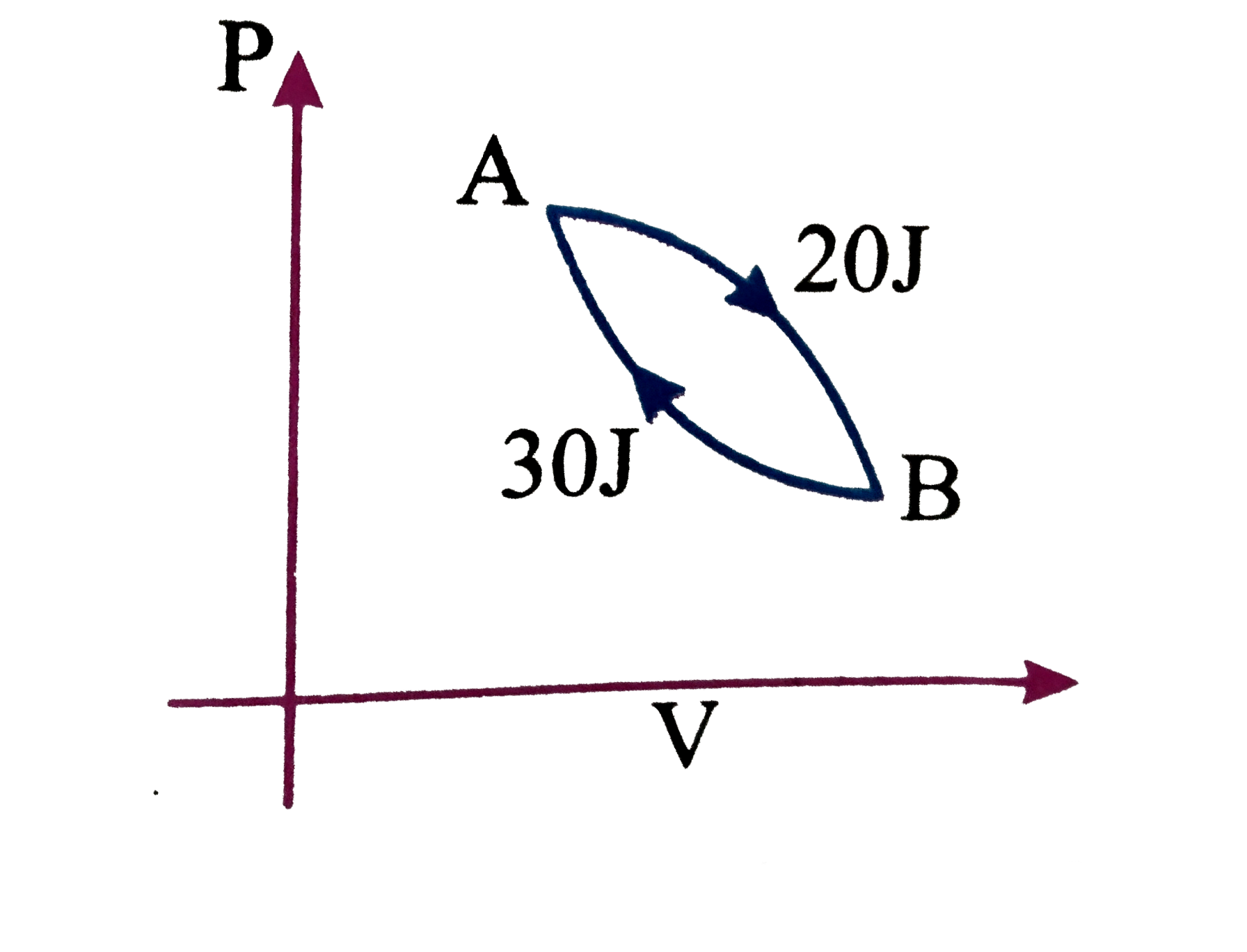Change in internal energy in an isothermal process for ideal gas is
Zero
(+) ve
(-) ve
Cannot be predicted
The correct Answer is:A
To solve the problem regarding the change in internal energy in an isothermal process for an ideal gas, we can follow these steps:
Step 1: Understand the Concept of Internal Energy
Internal energy (U) of an ideal gas is a function of temperature. For an ideal gas, the internal energy is directly proportional to its temperature.
Step 2: Define Isothermal Process
An isothermal process is one in which the temperature (T) of the system remains constant throughout the process.
Step 3: Relate Internal Energy to Temperature
Since the internal energy of an ideal gas depends only on its temperature, if the temperature does not change (as in an isothermal process), the internal energy will also not change.
Step 4: Apply the Formula for Change in Internal Energy
The change in internal energy (ΔU) can be expressed as:
ΔU=nCvΔT
where:
- n is the number of moles,
- Cv is the molar heat capacity at constant volume,
- ΔT is the change in temperature.
Step 5: Analyze the Isothermal Condition
In an isothermal process, since the temperature remains constant, we have:
ΔT=0
Step 6: Substitute into the Formula
Substituting ΔT=0 into the equation for change in internal energy:
ΔU=nCv⋅0=0
Conclusion
Thus, the change in internal energy (ΔU) in an isothermal process for an ideal gas is:
ΔU=0
Final Answer
The change in internal energy in an isothermal process for an ideal gas is zero.
---
Internal energy (U) of an ideal gas is a function of temperature. For an ideal gas, the internal energy is directly proportional to its temperature.
An isothermal process is one in which the temperature (T) of the system remains constant throughout the process.
Since the internal energy of an ideal gas depends only on its temperature, if the temperature does not change (as in an isothermal process), the internal energy will also not change.
The change in internal energy (ΔU) can be expressed as:
ΔU=nCvΔT
where:
- n is the number of moles,
- Cv is the molar heat capacity at constant volume,
- ΔT is the change in temperature.
In an isothermal process, since the temperature remains constant, we have:
ΔT=0
Substituting ΔT=0 into the equation for change in internal energy:
ΔU=nCv⋅0=0
Thus, the change in internal energy (ΔU) in an isothermal process for an ideal gas is:
ΔU=0
The change in internal energy in an isothermal process for an ideal gas is zero.
Topper's Solved these Questions
- THERMODYNAMICSBOOK - AAKASH INSTITUTE ENGLISHCHAPTER - THERMODYNAMICSEXERCISE - Try Youself
13 Videos
- THERMODYNAMICSBOOK - AAKASH INSTITUTE ENGLISHCHAPTER - THERMODYNAMICSEXERCISE - Assignment (Section-A) Objective Type Questions (one option is correct)
50 Videos
- THERMAL PROPERTIES OF MATTERBOOK - AAKASH INSTITUTE ENGLISHCHAPTER - THERMAL PROPERTIES OF MATTEREXERCISE - Assignment (Section-J) Akash Challengers Questions
7 Videos
- UNITS AND MEASUREMENTSBOOK - AAKASH INSTITUTE ENGLISHCHAPTER - UNITS AND MEASUREMENTSEXERCISE - ASSIGNMENT (SECTION - D)
15 Videos
Similar Questions
In an isothermal process for an ideal gas
View SolutionStatement-1 : When an ideal gas is freely expanded change in internal energy of gas is zero, where as when real gas is expanded freely it's internal energy decreases.
Statement-2 : There is no intermolecular force of attraction in ideal gas.
View SolutionThe dependence of Gibbs free energy on pressure for an isothermal process of an ideal gas is given by
View SolutionDuring the isothermal of an ideal gas :
View Solutionisothermal elasticity of an ideal gas is
View SolutionFor an isothermal expansion of an ideal gas
View SolutionAssertion: For an ideal gas in a cyclic process and in an isothermal process change in internal energy is zero.
Reason: In both processes there is no change in temperature.
View Solution0.5 moles of an ideal monoatomic gas undergoes a thermodynamic process from A to B as shown in figure. The change in internal energy of the gas during the process from A to B is
View SolutionIn a cyclic process shown in the figure an ideal gas is adiabatically taken from BtoA, the work done on the gas during the process BtoA is 30,J when the gas is taken from A to B the heat absorbed by the gas is 20J Then change in internal energy of the gas in the process A to B is :

View SolutionIn a cyclic process shown in the figure an ideal gas is adiabatically taken from BtoA, the work done on the gas during the process BtoA is 30,J when the gas is taken from A to B the heat absorbed by the gas is 20J Then change in internal energy of the gas in the process A to B is :

View Solution
